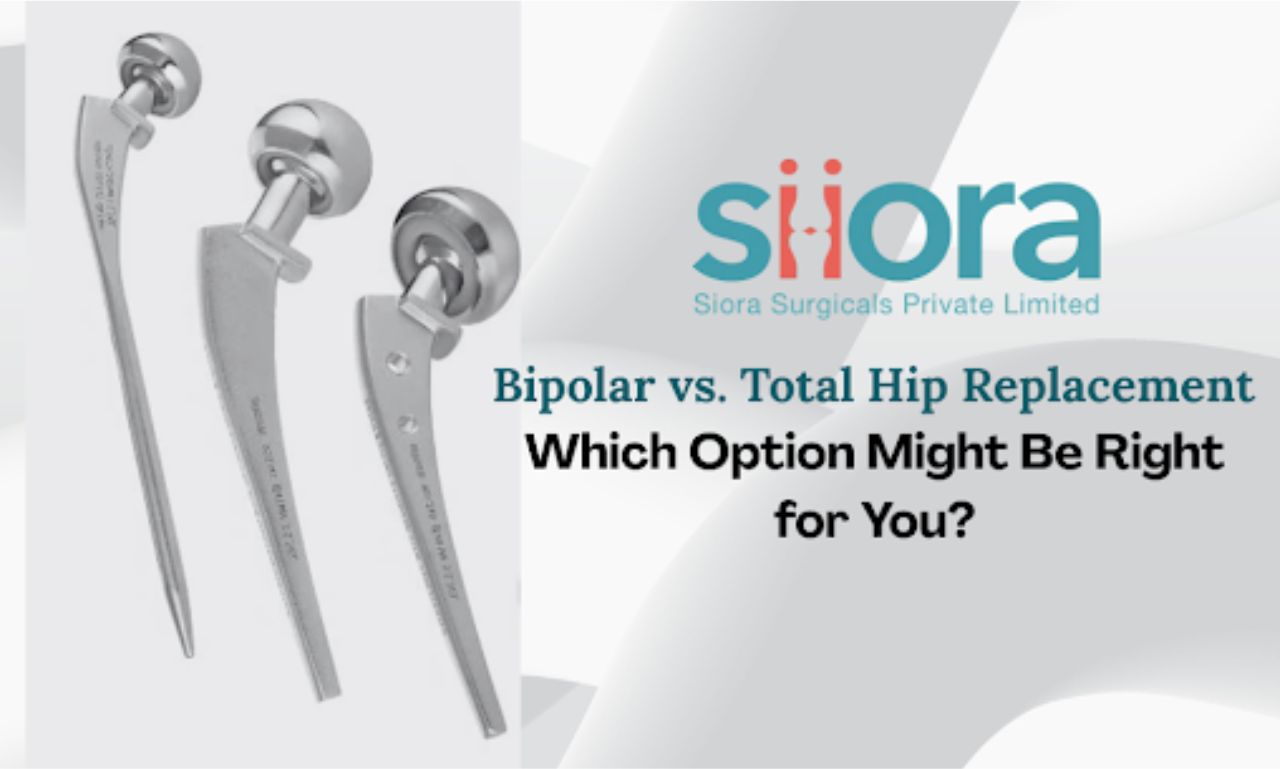When chronic hip pain starts interfering with everyday life, many people start exploring surgical options. Two common procedures, bipolar hip replacement and total hip replacement (THR), are often considered. While both aim to relieve pain and restore mobility, they’re not interchangeable. Understanding their differences can help you make a more informed decision with your surgeon.
What’s the Difference?
Bipolar hip replacement, also called bipolar hemiarthroplasty, is often used for older adults with hip fractures rather than long-term arthritis. In this procedure, only the femoral head (the ball at the top of your thigh bone) is replaced. The new artificial head fits inside a metal shell that allows it to rotate within itself, hence “bipolar.”
Total hip replacement, on the other hand, replaces both the femoral head and the acetabulum, the socket in your pelvis. This offers a full resurfacing of the hip joint and is usually the go-to for those with severe arthritis or joint degeneration.
When Bipolar Hip Replacement Might Be Preferred?
Bipolar replacements are typically used in older patients, especially those with low activity levels or osteoporotic fractures. Since this procedure is less invasive than a total replacement, the surgery is often quicker, with less blood loss and shorter recovery times.
Another benefit is reduced risk of dislocation due to the dual-mobility design. This is helpful for patients who may not be able to follow strict movement precautions after surgery.
However, because the natural socket isn’t replaced, the bone there continues to experience wear and tear. Over time, this can lead to pain or the need for a revision surgery, especially if the patient becomes more active.
Why Total Hip Replacement Might Be the Better Choice?
Total hip replacement is considered the gold standard for advanced osteoarthritis, rheumatoid arthritis, and joint degeneration from long-term wear. It’s more commonly recommended for younger, more active patients because it provides a more durable and long-lasting solution.
THR allows for better pain relief and range of motion since the entire joint is replaced. It also reduces the risk of complications related to socket deterioration down the road.
The trade-off? Recovery may take a bit longer, and there’s a slightly higher risk of dislocation in the early stages. But for many, the benefits outweigh the downsides.
What Are the Factors to Consider?
Choosing the right surgery depends on several personal factors:
- Age and Activity Level: Younger and more active individuals tend to do better with total hip replacements. If you’re older with limited mobility, a bipolar replacement might be enough.
- Cause of Hip Damage: A fracture from a fall versus years of joint degeneration calls for different approaches.
- Overall Health: Chronic conditions like heart disease or diabetes might make a shorter, less invasive procedure like bipolar replacement safer.
- Long-Term Goals: Do you want the quickest recovery now, or are you looking for a durable solution that can keep up with an active lifestyle?
Talk With Your Surgeon
This isn’t a decision to make on your own. The right choice depends on more than X-rays or MRI results, it’s about your daily function, goals, and quality of life. Your orthopedic surgeon will weigh all these factors and guide you toward the most appropriate option.
Final Thought
Both bipolar and total hip replacements have their place in modern orthopedic care. One isn’t inherently better than the other, they’re designed for different situations. If you’re facing this decision, don’t be afraid to ask questions. The more you understand your options, the more confident you’ll feel in the choice you make.
To explore advanced orthopedic solutions and other healthcare supplies, book your visit to the Florida International Medical Expo 2025.











